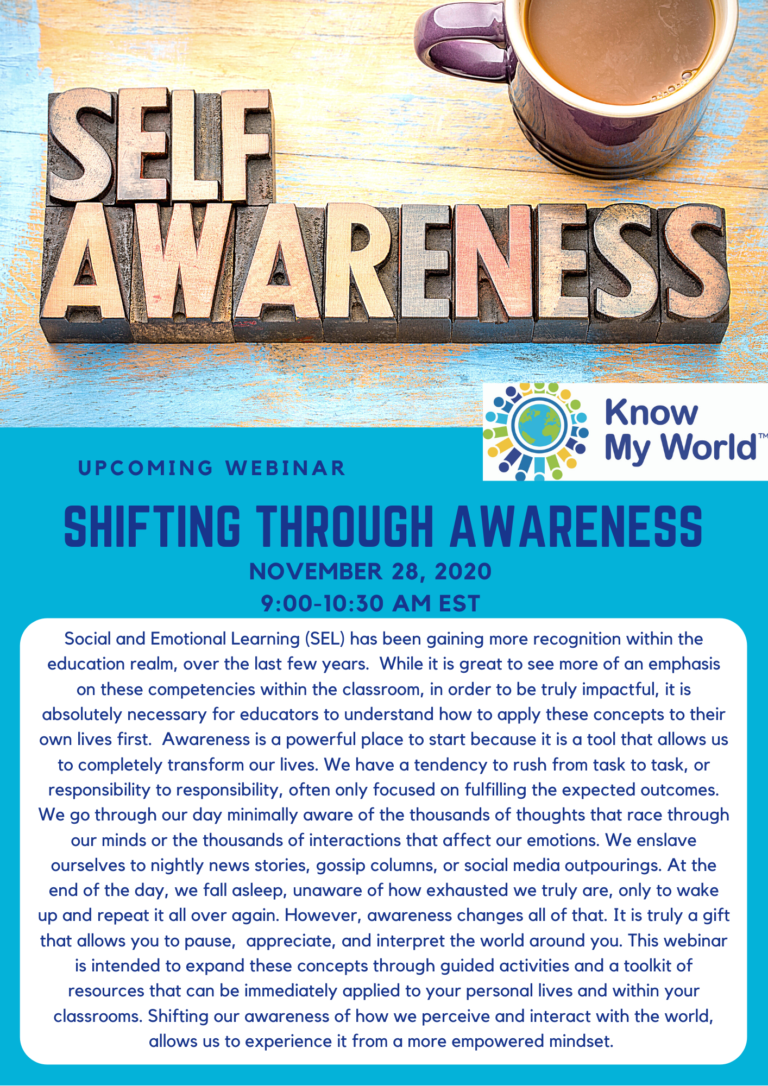
By Elira Stefani, Know My World Developer
One hugely important life skill is learning how to communicate consciously and effectively. How we communicate with others impacts the type of relationships we create with them. Incorporating these skills into the classroom would enhance both teacher to student and student to student interactions. Know My World is a huge advocate of Nonviolent Communication and we will be supporting teachers in this skill as part of our upcoming professional development training.
What is Nonviolent Communication?
Nonviolent Communication (NVC) is an approach to use interpersonal communication to improve compassionate connections between people. It was developed by Marshall Rosenberg in the 1960s. It comes from the idea that we all have compassion inside of us, and we truly want to be good people and help others. NVC is about giving and receiving messages to answer two important questions:
- What’s alive in us? and
- What can we do to make life more wonderful?
The NVC process is divided into five components:
1. Observe the situation without evaluating or judging. A pure observation is without comparison to the past.
2. Identify a feeling. Feelings are always related to your body, and never involve others.
3. Identify your need or desire.A psychic or basic need is always about oneself, not about another, and is always a basic human quality.
4. Formulating a request. Phrase a specific request positively, speaking kindly, but firmly and clearly, without unnecessary emotion such as sarcasm.
5. Obtain feedback on everything you have done so far. “Am I on the right track with this conversation?” or “Time out. How are we doing resolving this issue?”
With this process one becomes aware and an observer of their feelings. Each feeling is associated with a need we have at the root of that feeling. If you are feeling a non pleasant feeling, it is important to identify which need is not being met. With that need in mind, you request a specific action which would meet that need. Most of the words we identify as feelings, are interpretations of other underlying emotions and feelings.
Feelings when our needs are satisfied: affectionate, confident, engaged, inspired, excited, exhilarated, grateful, hopeful, joyful, peaceful, refreshed
Feelings when our needs not are satisfied: afraid, annoyed, angry, aversion, confused, disconnected, disquiet, embarrassed, fatigue, pain, sad, tense, vulnerable, yearning
Some basic needs we all share: autonomy, connection, honesty, meaning, peace, physical well-being, play
For the needs and feelings inventory visit this website: https://www.cnvc.org/training/resource/feelings-inventory
When making the requests in order to meet your needs, it must not be a demand. It is only a true request when you are open to receiving any answer back. If the other person cannot make the action of the request, it needs to be because it would conflict with one of their needs not being met. That is why it is important to have an open mind and heart in receiving the expression and feelings of the other as well. With this also comes the responsibility aspect. Taking responsibility is also an important component of Nonviolent Communication. Responsibility for how we choose to hear difficult messages. Also responsibility for our own feelings and how we communicate them to others.
It is important to have authentic non-judgemental open communication. A non-judgemental space opens a freedom of expression from the heart, from what is alive in us. We want to communicate the behavior without mixing in a diagnosis, judgment, or evaluation. Observe without evaluating. Labels often come from evaluating or hearing from your perspective, which impedes us from really hearing the other. Practice listening openly without preparing your answer or showing expressions on your body language. Listen without interruption.
The last component of Nonviolent Communication is feedback. While using NVC you can ask “Can you tell me what you heard me say?”. This is not meant to be a test, but instead it is meant for making sure the other person has heard you, and not what they think you said. It is a way to see if your point came across how you truly meant it.
With practicing NVC daily, it will become a normal part of the way you communicate. By referring to the needs and feelings inventory often, and by practicing the methods of NVC, your vocabulary of expressing yourself will widen and you will have an easier way to communicate. This enriches your relationships around you and because of that, you will attract more joy into your life.


